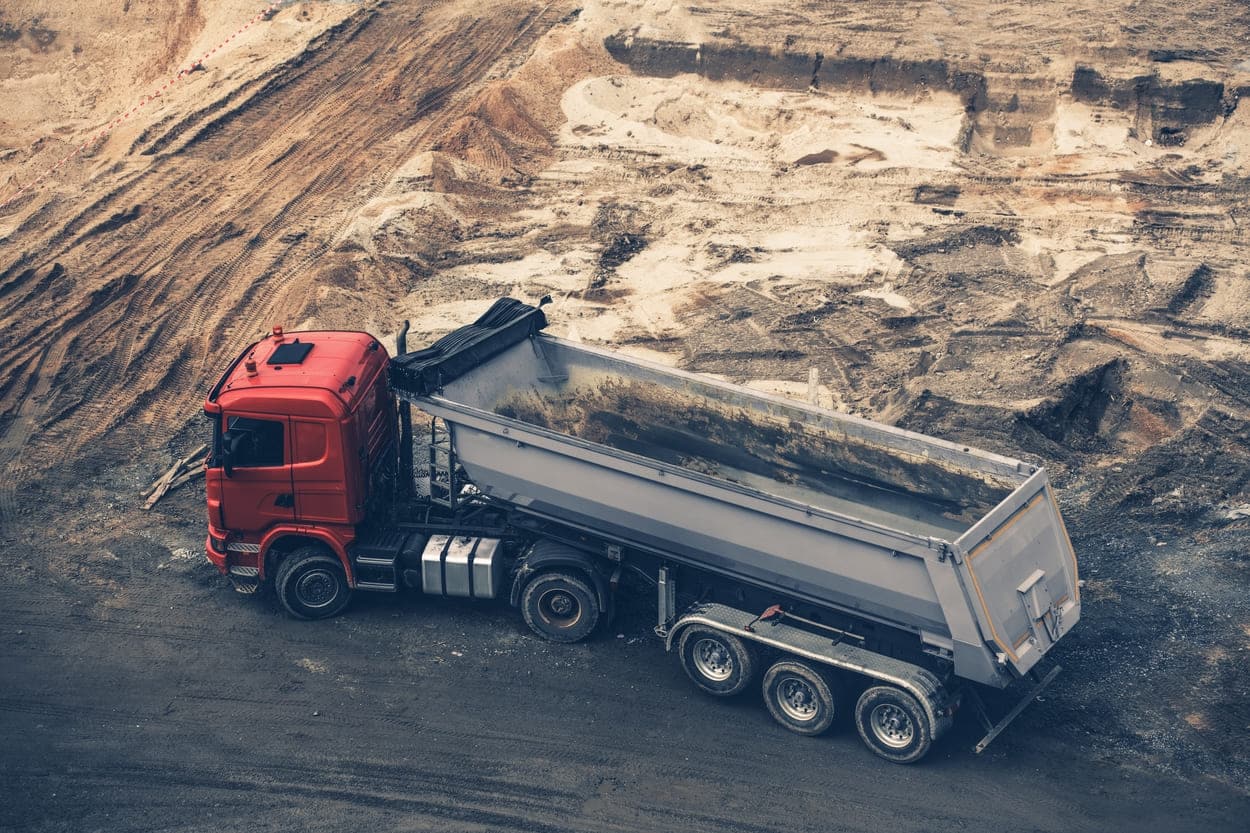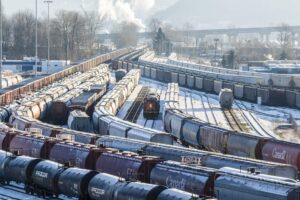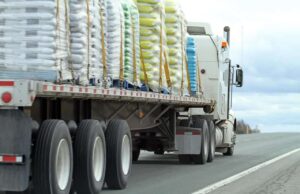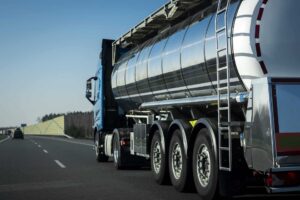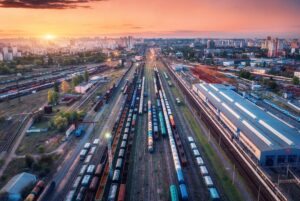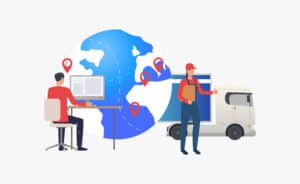One of the strongholds of any company that manufactures or produces goods is raw materials. In fact, without raw materials, there won’t be anything to work on to produce. This now makes them a vital foundation on which products are crafted.
As important as they are, so all so is, periodical and accurate estimation is important for the success of any business. Whether you are a small-scale operation or a global conglomerate, understanding how to assess and predict these transportation expenses accurately is paramount.
Today, we will take you through the level at which you can conveniently estimate raw material’s transportation costs, as well as the factors that influence them.
Understanding the Transportation Cost in Logistics
Transportation, as we all know, means the process of moving from one place to another. This can be by air, road, rail, and by sea. Now, when we talk about transportation costs in logistics, it refers to the money a company or individual has to spend to move goods or people from one place to another.
Just as we used to send a package to a friend who lives far away, the cost you pay for shipping that package is part of the transportation cost.
The cost we are talking about comprises elements like fuel, vehicle maintenance, labor wages for drivers, and even the fees for using roads or rail. Think of it as the price you pay for the service of getting your stuff or yourself from point A to point B.
Now, in the business world, transportation cost is a big deal. Therefore, this calls for companies to figure out or find a way to reduce the money they spend to move their products to customers or raw materials to their factories.
The moment they are able to figure it out, they can save money and offer lower prices to consumers.
So, in simple terms, transportation cost in logistics is the expense you pay for the movement of things, and it’s a critical factor in how goods get to where they need to be while keeping prices reasonable for everyone.
Some Types of Transportation Cost
For maximum understanding, it requires we check into this.
Fixed Transportation Cost
Fixed costs in transportation refer to the expenses that stay the same, no matter how much or how little you use a vehicle or transportation service. Think of fixed costs as the bills you have to pay, even if your car or truck just sits in the driveway.
These costs don’t change with the number of trips or distance traveled. Common fixed costs in transportation include things like insurance, vehicle registration, and loan payments for the vehicle.
Imagine you own a car. Whether you drive it every day or leave it parked, you still have to pay for insurance and the monthly car loan if you have one. It’s like having a gym membership that costs the same whether you visit every day or not at all.
Fixed costs are important to consider because they are the same whether your vehicle is fully utilized or not, so managing them effectively can help you budget and make better transportation decisions.
Last-Mile Delivery Transportation Cost
Last-mile delivery costs are the expenses associated with getting a product from a nearby distribution center or store to your doorstep. Think of it as the final leg of a product’s journey before it reaches you.
These costs include the wages of delivery drivers, the fuel or electricity needed to power delivery vehicles, and sometimes even the cost of packaging designed for safe and efficient doorstep delivery.
Imagine ordering a package online. The last-mile delivery cost covers everything from the person who drives the delivery van to your house, the gas used for the short trip, and the box your item comes in.
It’s like the cherry on top of your shopping sundae, the final step that ensures your purchase actually gets to you. Particularly in e-commerce, last-mile delivery charges can account for a sizable portion of total transportation costs.
Many businesses strive or struggle to optimize this process to reduce costs and speed up and make it more convenient for customers.
Freight Transportation Cost
Freight transportation costs refer to the expenses incurred when goods or products need to be moved from one place to another. Just the way you send a package to a friend, and it has to travel a long distance to reach them.
The freight transportation cost is the cost you pay for shipping that package, whether by truck, train, plane, or ship. It covers or entails all various expenses like fuel, labor, vehicle maintenance, and even fees for using certain transportation routes.
Freight transportation cost is estimated according to the distance covered, and these costs are essential for businesses and individuals because they affect the prices of products we buy. If freight transportation costs are high, companies may charge more for their goods to cover these expenses, potentially making things more expensive for consumers.
So also so, lower transportation costs can lead to more affordable products. For firms to remain competitive and for people to make informed purchase decisions, it is essential to understand all these details and manage these expenses.
Vehicle Maintenance Transportation Cost
Vehicle maintenance costs are the expenses associated with keeping a vehicle in good working condition. Think of your car or any other vehicle you own – over time, it needs care and fixing to stay safe and dependable.
Maintenance is necessary because it helps prevent breakdowns and keeps the vehicle running smoothly. Just like how our bodies need check-ups and occasional repairs to stay healthy, vehicles require regular attention, too.
This includes changing oil, replacing worn-out tires, fixing brakes, and more. Ignoring maintenance can lead to bigger and costlier problems down the road. It’s like skipping dentist appointments and ending up with a painful toothache.
Vehicle maintenance costs are like the small investments you make to avoid big, unexpected bills.
Therefore, what is required now is regular check-ups and timely repairs of the worn-out part to keep your vehicle reliable and ensure it gets you where you need to go safely without breaking the bank with major repairs. So, they’re like preventive medicine for your car!
Terminal Transportation Cost
Terminal costs in transportation refer to the expenses associated with the various facilities and infrastructure used for the handling, storage, and transfer of goods or passengers at transportation terminals. These terminals can be like hubs where products or people are temporarily stored, sorted, or transferred between different modes of transportation, such as from trucks to trains or ships to trucks.
Think of a transportation terminal as a central station or depot where things stop or change, like a bus station where buses pick up and drop off passengers. These facilities’ entire operation and upkeep, including employee wages, equipment maintenance, security, and utility costs, are covered by the terminal costs.
For people to have a smooth and safe transition between various sections of their journey, the terminal costs thus all that, and it comprises handling charges, traffic control, gate fees, and more.
In simpler terms, terminal costs are like the expenses of maintaining and operating the important transfer points in our transportation system, making sure that everything moves smoothly and safely from one place to another.
How to Estimate Raw Material Transportation Cost
In this session, we will be explaining in detail what to consider that can influence the estimation of raw material transportation costs.
Distance
Distance plays a crucial role in estimating raw material transportation costs. The farther the raw materials need to travel from their source to the production facility, the higher the transportation expenses.
This is because longer distances require more fuel, labor, and time. Companies use distance as a key factor to calculate shipping costs, considering factors like road conditions and transportation modes (e.g., full truckload transportation, rail transportation, or ship transportation).
So, by reducing the distance through strategic sourcing or choosing suppliers closer to the production site can help cut transportation costs and improve a company’s overall efficiency and profitability.
Now, less distance often means lower transportation expenses for getting the materials needed for production.
Transportation Mode
The mode of transport also plays a significant role during the process of performing the estimation of the raw material transportation costs. For example, if you use trucks, You have to consider distance, fuel prices by that time, and truck capacity.
By calculating these factors, you can estimate the cost. Although, trains may have fixed rates based on weight and distance. For ships, consider shipping lanes and port fees. Airfreight is the fastest but costliest due to speed.
Finally, pipelines have stable costs but need infrastructure. To estimate costs, gather data on these factors and use them to calculate transportation expenses for each mode.
Freight Class, Volume and Weight
You need to calculate the transportation volume to estimate raw material transportation costs. This means figuring out how much space or weight the raw materials will occupy during shipping. Measure the size, weight, or volume of the materials you’re moving to accomplish this.
Then, consider the mode of transportation (like trucks or ships) and their capacity limits. Multiply the volume by the transportation cost per unit (e.g., per mile or per container) to get an estimate.
The larger or heavier the materials and the longer the distance, the higher the transportation cost will likely be.
Packaging and Handling
During raw material transportation, another thing that is worth consideration when considering estimation is package handling. The way raw materials are packaged and handled can affect transportation costs.
Bulky or fragile materials may require special packaging or handling procedures to protect the materials from damage and, hereby, lead to loss. This, in return, will increase costs. Efficient packaging can help reduce transportation expenses.
Speed of Delivery
If a situation calls for a fast delivery on the same day or in the next 24 hours, then this will require additional cost as more work and effort will be required to ensure the raw material is delivered within the specified period of time.
The driver may have to drive overnight, and more money will be given as a reward for that. Also, if need be, there is going to be a need to introduce an airplane to make it work.
So, estimating raw material transportation costs will also involve considering how quickly you need the materials delivered. Faster delivery usually costs more because it requires special arrangements, like expedited shipping.
Slow deliveries, on the other hand, can be cheaper but might lead to production delays. To estimate costs, think about your production schedule and urgency. Slower deliveries may save money, but could risk production setbacks.
Estimating transportation costs depends on finding the right balance between delivery speed and budget constraints to keep your operations running smoothly.
Estimating Raw Material Transportation Costs
After we have identified the key factors that can be of influence to transportation costs, it’s time to dive into the actual estimation process. This section outlines the steps for estimating raw material transportation costs in detail.
1. Gather Data
To start estimating transportation costs, you’ll need accurate data on the factors mentioned above. This includes:
Distance: Use mapping tools or GPS systems to determine the exact distance between the pickup and delivery locations.
Mode of Transportation: Decide on the transportation mode based on your specific needs and the available options.
Transportation Volume: Know the quantity of raw materials you need to transport over a given period.
Freight Class and Weight: Determine the freight class and weight of your materials in accordance with industry standards.
Packaging and Handling: Assess whether any special packaging or handling is required.
Transportation Routes and Geography: Plan the most efficient routes and consider any geographical challenges.
Fuel Prices: Keep an eye on current fuel prices and, if possible, estimate future trends.
2. Calculate Base Transportation Costs
The base transportation costs include expenses directly related to moving your raw materials from point A to point B. These costs typically include:
Fuel Costs: Estimate fuel consumption based on distance and mode of transportation, factoring in current fuel prices.
Labor Costs: Calculate labor costs, including driver wages and any additional personnel required for loading, unloading, or handling.
Maintenance and Repairs: Account for vehicle maintenance and repair expenses to ensure safe and reliable transportation.
Tolls and Fees: Consider any tolls, permits, or fees associated with the chosen transportation route.
Insurance: Include insurance costs for cargo protection and liability coverage.
3. Additional Costs
In addition to the base transportation costs, there are often additional expenses that should be factored into your estimation. These may include:
Storage Costs: If raw materials need to be stored at any point during transportation, calculate the associated storage fees.
Detention and Delay Costs: Account for costs incurred due to delays in loading, unloading, or unexpected interruptions during transit.
Environmental Regulations: Some materials may require compliance with environmental regulations, which can result in additional costs.
Final Thoughts
Raw materials play a major role in the production sector, and it is also a bedrock of human sustainability. That being said, figuring out how much it costs to move raw materials is super important for businesses.
To do this right, businesses must look at the important factors we mentioned above, gather good info, and follow a clear process to get accurate cost estimates. Another thing to make it better is to seek for a better and more reliable logistic company to handle your transporting aspect business and help you save more money.
But remember, these transportation costs can change. They might go up or down because of things like market changes, new rules, or other stuff.

